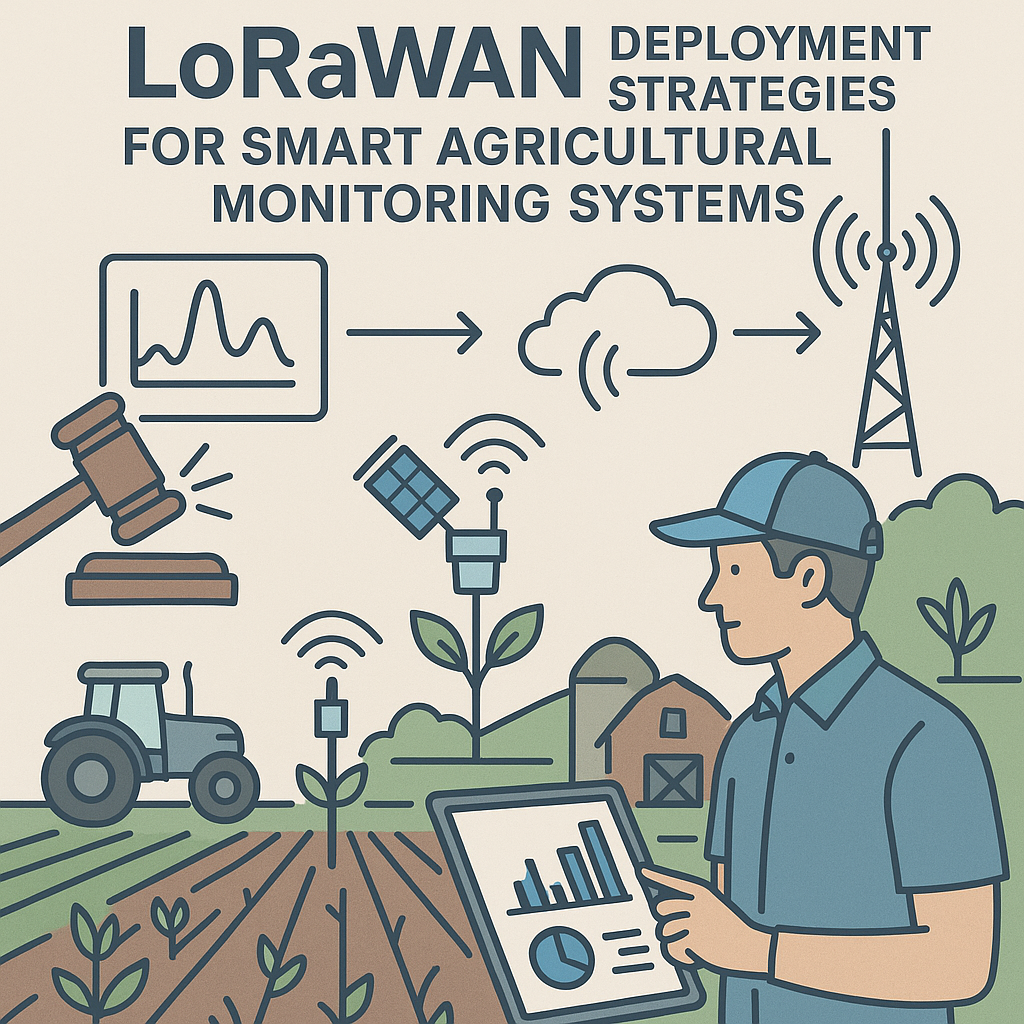Introduction
The recent changes in regulatory spectrum policies have significantly impacted the deployment strategies for LoRaWAN (Long Range Wide Area Network) in smart agricultural monitoring systems. As farmers and agricultural businesses increasingly adopt IoT solutions, understanding these regulatory shifts is crucial for optimizing connectivity and ensuring compliance while enhancing operational efficiency.
Understanding LoRaWAN and Its Role in Agriculture
LoRaWAN is a low-power, wide-area networking protocol designed for IoT applications. It enables devices to communicate over long distances using minimal energy, making it ideal for agricultural monitoring systems, which often require sensors distributed over large areas.
- Low Power Consumption: Devices can operate on battery for years, reducing maintenance costs.
- Long Range: Capable of transmitting data over several kilometers, even in rural settings.
- Scalability: Easily accommodates more devices as the agricultural operation expands.
Recent Regulatory Spectrum Changes
Regulatory bodies are continually updating spectrum allocations to accommodate the growing demand for wireless communication technologies. Recent changes include:
- Increased Bandwidth Availability: More frequency bands have been allocated for unlicensed use, allowing for greater data transmission capabilities.
- License-Free Access: Some regulations now permit LoRaWAN deployments without the need for expensive licensing fees, reducing entry barriers for farmers.
- Interference Management: New guidelines have been established to minimize interference between different wireless technologies, improving reliability.
Impact on Deployment Strategies
The changes in regulatory spectrum policies have prompted agricultural businesses to reassess their deployment strategies for LoRaWAN. Here are several key impacts:
1. Enhanced Network Planning
With the availability of additional frequency bands, agricultural businesses can now design their networks with greater flexibility. This allows for:
- Optimizing sensor placement to ensure maximum coverage.
- Reducing dead zones and enhancing signal quality.
2. Cost Reduction
The removal of licensing fees and the ability to use unlicensed bands has led to significant cost savings. This enables:
- Increased investment in sensor technology and data analytics.
- More farmers to adopt smart agriculture practices without the burden of high costs.
3. Improved Data Transmission
With changes in regulations aimed at managing interference, data transmission reliability has improved. This impacts deployment strategies by:
- Enabling real-time data collection and analysis for better decision-making.
- Supporting the use of more complex sensors that require high data throughput.
4. Scalability and Future-Proofing
As regulations evolve, so does the opportunity for agricultural businesses to scale their operations. Key points include:
- Ability to add more devices to the network without significant additional costs.
- Future-proofing investments as new technologies emerge within the regulatory framework.
Challenges to Consider
Despite the positive impacts, there are challenges that agricultural businesses must navigate:
- Compliance: Understanding and adhering to new regulations can be complex.
- Technology Adaptation: Existing systems may need upgrades to take advantage of new bandwidths.
- Interoperability: Ensuring different devices and systems work seamlessly together can be a challenge.
Conclusion
The impact of recent regulatory spectrum changes on LoRaWAN deployment strategies for smart agricultural monitoring systems is profound. As farmers and agricultural enterprises adapt to these changes, they must carefully consider both the opportunities and challenges presented by the new regulatory landscape. By leveraging the benefits of increased bandwidth and reduced costs, while remaining vigilant about compliance and technology integration, the agricultural sector can significantly enhance its operational efficiency and sustainability in the years to come.



